Keeping short polyped stony corals (SPS) requires dedication and knowledge to maintain the fine balance those invertebrates demand to flourish. Besides excellent water clarity, optimal temperature range and pH values, hard corals secrete skeletons of calcium carbonate in order to grow and therefore need to be supplemented on regular basis. There are several methods of dosing Calcium, Carbonate, Magnesium and optional trace elements with two being most popular in recent years- the so called 2-part dosing regime and an original Balling method (or it’s variation called “Balling light”, that came from Europe and is named after a man who developed and published it, a great German reefer, Hans-Werner Balling). Whichever you choose (and they are quite similar to each other) to keep your SPS corals happy and growing in your aquarium, they both require dosing liquid solutions of Calcium, Alkalinity (Carbonate) and Magnesium on a daily basis. In order to maintain ionic balance in a reef tank, the key with dosing liquid solution is to add small amounts throughout the day rather than 1-2 large doses daily. Unfortunately, most of us cannot babysit our reefs all day long and need a little bit of automation in the dosing department. Here’s where dosing pumps come to play…
One such a device, and a topic of today’s Product Review, is a doser from Europe that just entered American markets and tries to compete with another well known pumping device (more on that later). Doser One Evolution is the name and it comes from a Polish based company Aqua-Trend. A full, in-depth review will answer the question- is it worth the price and how well does it compete compared to others on the markets. Let’s find out…
In case you’ve never heard of an aquarium dosing pump before, this device consist of a series of peristaltic pumps hooked up to a timer/controller that regulates the amount of liquid pumped. Peri… what?
Taken straight from Wikipedia, a peristaltic pump is a type of positive displacement pump used for pumping a variety of fluids. Or, in plain English, a peristaltic pump consist of a piece of tubing bent around a series of rollers moving in a circular fashion (with help of a little electric motor) that squeeze out precise amount of liquid in a given time. How precise depends on a quality of each element and controller that runs the pump. Peristaltic pumps are a staple in medical field, where they are used to dose liquid medications for patient. In fact, aquarium industry adopted this design from medical field when liquid dosing became more popular amongst hobbyists. We have several different manufacturers offering dosing pumps, from inexpensive, fixed volume per minute models to very sophisticated ones offering aquarium controllers compatibility and medical-grade components. Currently, the most popular dosing pump in the market is Bubble Magus BM-T01 that retails for around $300 and has three dosing pumps on-board with expansion modules available as an option. Aqua-Trend aims to offer an alternative to BM by introducing Doser One Evolution to US market. Before I get to the unpacking process, it is important to shine some light on the manufacturer itself.
Aqua-Trend is a company based in Poland that makes aquarium equipment and medical pumps (under different name). It’s aquatic catalog consist of several dosing pump models, an aquarium controller, wavemakers and few others. Doser One Evolution is AT flagship product and it’s made in Poland.
Let’s point out DOE main specifications:
-3x independently controlled, medical grade peristaltic pumps with optional 4 pump slave module (total of seven pumps per controller) or/and “fast” 3 pump module
-bright, easy to read LCD screen with menu in English and Polish languages
-24 hours/7 days cycle real time clock
-permanent memory with battery backup
-minimum dose 0.1ml, max 200ml in one cycle
-low fluid level alarm
To test those claims/specs in real life, let’s start with the unpacking process.
1.
- Unboxing/general appearance
The unit I received for review came in an OEM box with the unit and it’s additional components securely packed with foam padding on sides. Inside the box we have:
-Doser itself
-wall wart adapter complete with US plug
-silicon grease and syringe for pumps’ maintenance
-calibration vial
-printed instruction
A chemical-resistant silicone tubing is an option (I’ll get to it later), although standard airline tubing fits DOE pump heads without issues.
Doser One Evolution is wrapped in a solid white plastic case. It doesn’t exactly turn heads with it’s overall appearance, however the clean looking design is what should be expected from such a device. The unit measures 8 7/8” (224mm) Wide x 7 3/4” (197mm) Long (not counting pump heads sticking out of the front) x 3 1/4” (83mm) High (including four legs; front legs can be unfolded additional 1 1/4”, positioning the whole dosing device in a slight angle for better LCD read-out).
Front panel consist of:
-on the left, a 2”5”x1” LCD screen (back lit in blue when on) with 4 functional keys labeled “Enter icon”, “+”, “-” and “Menu”
-on the right, three peristaltic pumps securely attached with two screws each
Back panel has only two socket connectors, one for AC/DC power adapter and a 5-pin connector to attach additional pump module. Top of the unit has slotted grill and company’s logo while underside we have earlier mentioned plastic legs.
The optional silicone tubing is made of a high quality, thick wall rubber that is both flexible and resistant to kinking. I highly recommend getting that kind of tubing for this (or any other, for that matter) aquarium doser, as it is really superb compared to regular airline tubing sold at pet stores.
2. Operation/functions
Installation of doser and hooking up dosing containers are pretty straight-forward- the nozzle on the left of each peristaltic pump is where the feed line from container goes, while the other end should be placed in the sump or other area you wish your liquids to mix with saltwater. Plugging in AC/DC adapter to 120V source brings up a welcome screen on the lcd display, which quickly shifts into the main screen. On it, we have current time in 24h format and day of the week. Under lcd screen we have 4 menu buttons, from left to right: ENTER for accepting changes, “+” and “-” to change values and MENU for going back to the main menu and/or rejecting changes made to doser’s program
Pushing menu button reveals several options:
SET DATE/TIME- to change time/date, obviously
CALIBRATION- each pump has to be calibrated before use (more on that in next paragraph)
SCHEDULER- to program each pump dosing schedule
MANUAL ON/OFF- each pump can be run manually regardless of the schedule; there are three options available AUTO MODE where pump follows the program, ALWAYS ON, where pump runs constantly until told otherwise and ALWAYS OFF that shuts the pump down regardless of given schedule
REFILL CANISTER- allows for setting the low liquid level alert to function properly (I will get to that later in the article)
LANGUAGE- either English or Polish can be chosen
First thing to do on a new doser is to set time and date. It’s important to note that the learning curve here is non-existent, the whole procedure of changing values and browsing through menus can be mastered in less than two minutes. It’s basically an “Accept, Up, Down, Go back” logic with those four buttons (maybe except calibration, but that can be figured out rather quick as well, I will demonstrate that in a second). Buttons are easy to push and receive illumination from the screen, so it’s easy to see them in the darkness of the fish tank cabinet.
So we have the doser and dosing containers hooked up, time/date set, we have to get through calibration process before scheduling the dosing regime.
3. Calibration
Calibration process is what really set this doser apart from other on the market. According to Aqua-trend, each peristaltic must be calibrated before use with the liquid that given pump is going to dispense. I personally find that statement believable, as different solutions have different densities and therefore are not dispensed equally. Calibration is quite easy and rely on time lapse in which the supplied calibration vial fills with dosing liquid. I went to calibration menu, selected the pump and made sure the whole length of tubing was filled with dosing liquid without any air gaps. Next, I secured tubing into vial and pressed ENTER. Pump turns on and display shows time in milliseconds. When liquid level in the calibration vial reaches 5ml, I pressed ENTER again and doser calculates elapsed time and set the pump accordingly. Each pump has to be calibrated only once (unless you change dosing solution) and can be repeated in case you missed the 5ml mark.
4. Dosing program
Doser One Revolution offers several dosing options that are spread over a 7 day time frame. The minimum single dose is 0.1ml, maximum 200ml. For doses 0.1-5ml, the resolution is 0.1ml, while for doses 5-200ml, resolution is 1ml. When scheduling a dosing regime for each pump, we have two options:
-day to day dose- we can program each day of the week independently, as well as each hour within the day (which gives the maximum of 24 doses a day), let’s say you would like the pump to dose 5ml of Calcium on Monday at 6 am in the morning, then 12 ml at noon and 20 ml at 6pm, but need to change the dose schedule on Tuesday (for whatever reason); with Doser One Revolution you can do so- in fact, you can program 24×7=168 individual doses within a 7 day period
-weekly dose- in case you wish your doses to be repeated at the same hour each day of the week, you can program one single dose per hour, the total of 24 doses that will be repeated throughout the week
Those two options create countless dosing combinations, where one pump doses based on a weekly schedule, while the other goes riot and doses different values every day/hour. Programming single doses is as easy as setting the time- first you select the above mentioned options (day-to-day/weekly), then you set dose time (in full hour increments) and amount (in milliliters).
5. Low liquid level alarm
Another interesting function of Doser One Revolution is it’s programmable liquid level alarm. What it does is inform you when solution levels in your dosing containers drop to around 10% and it does so by calculating the total dosed volume for each time until you refill the canister. How does it work?- every time you refill your storage jars you go to REFILL CANISTERS menu, select pump and the amount of liquid added to the container. The downside of this feature is that you can only choose from pre-programmed canister volumes (100, 500, 1000, 2000 and 5000ml), so you need to measure the amount of liquid you add to the holding bottle. Not a big deal after all, but might be irritating to (“cough”lazy “cough, cough”)some. When the liquid level drops to around 10% of added value, DOE sends an alarm sound and displays graphic warning on LCD screen.
6. Maintenance
Doser One Evolution requires little attention except regular cleaning of calcium and alk residues from the tubing. Additionally, to extend peristaltic pumps’ life, Aqua-Trend suggest greasing pumps head bi-monthly with the supplied silicon grease and syringe. To do that, one leg of each pump can be bent a little and the grease injected into the transparent pump’s head.
7. Accuracy/ noise level
I’ve been using this dosing device for over a month with great results. My dosing containers have liquid level scale in millimeters and I observed the doses to be dead accurate. I even hooked up third pump to dose 1ml/day of Amino acids to my SPS corals with no problems whatsoever (still prefer to dose that particular thing manually though, but I am kind of paranoid about my tank being overdosed:)). The noise level is a big plus too- while the DOE dosing pumps are not dead-silent by any standards, they are quiet compared to the Bubble Magus I used before switching. I can’t compare noise level to the more expensive pumps such as Vertex Libra and I would like to hear your opinion if you have any experience with them. DOE is a rather slow dosing device (it takes a little less than a minute to dose 5 ml) which is great to gradually add solution to the sump drop by drop. The “fast” module is using different peristaltic pumps and therefore doses faster, in case someone needs it.
8. Verdict/Conclusions
Doser One Evolution from Aqua-trends debuts on US soil with a big punch that can give other affordable doser manufacturers run for their money. It’s solid build, great accuracy and wide range of dosing choices makes DOE good alternative to what’s already on the market. It’s not the sexiest looking device, if you’re into that, but it works well and it’s extremely easy to operate. Longtime durability has yet to be determined, therefore I can’t comment on that. It cannot be hooked to aquarium controllers at this point, but that ability comes with a hefty price at these days, so there is not much to complain here. My final verdict: if you are in a market for an aquarium dosing device in a sub $300 price range (for 3 separate channels that is), give Doser One Evolution a try and you won’t be disappointed.
Doser One Evolution will soon be available for purchase through it’s official American distributor, Reefomania (www.reefomania.com) and retails for $329.95. Expansion module with 4 pumps (4.5ml/min) costs $254.95, while the “fast”, 3 pump expansion (40ml/min) price is $244.95. Optional silicone tubing can be ordered for $0.95/ft. All Doser One Evolution pumps carry 2 years US warranty.


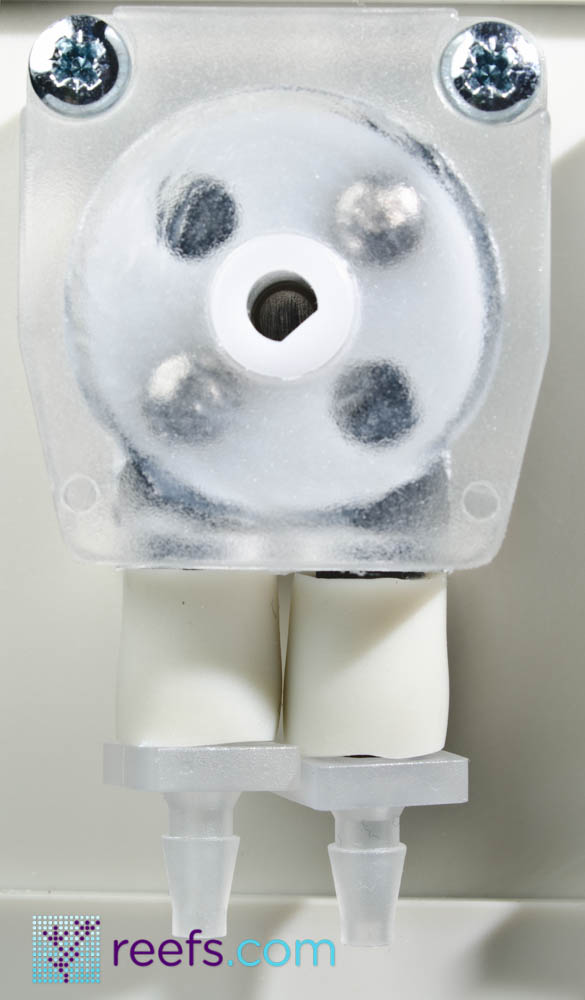
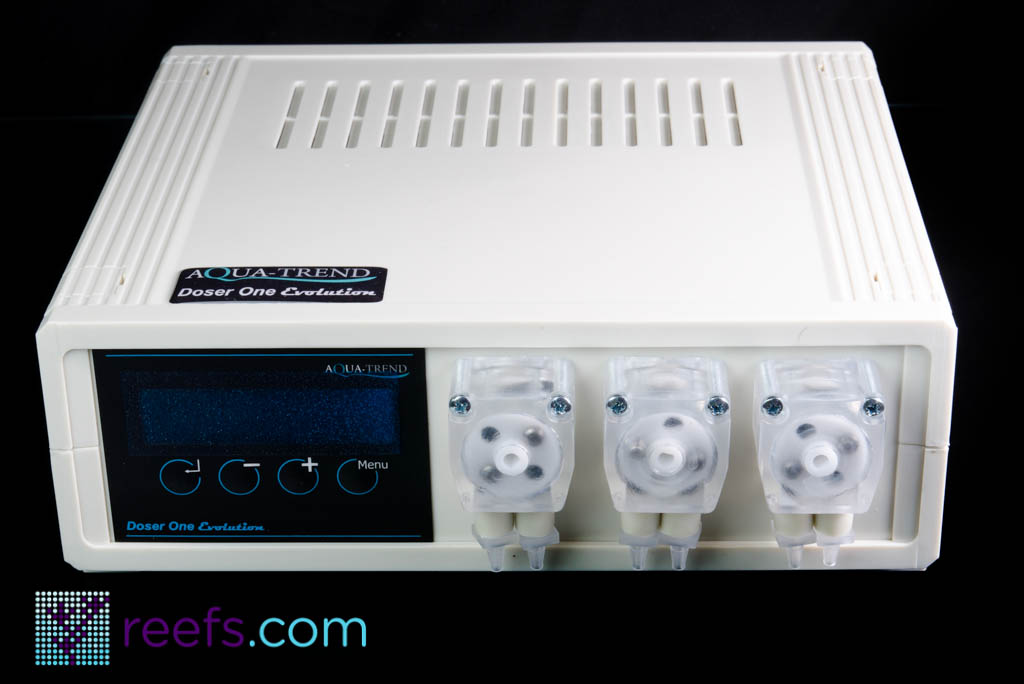
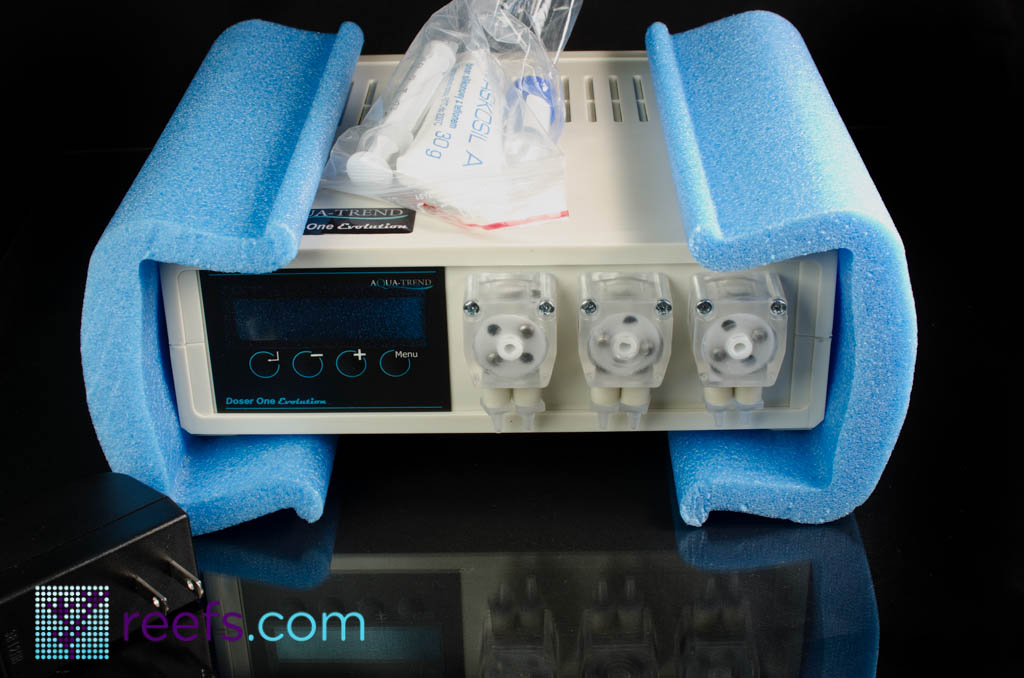

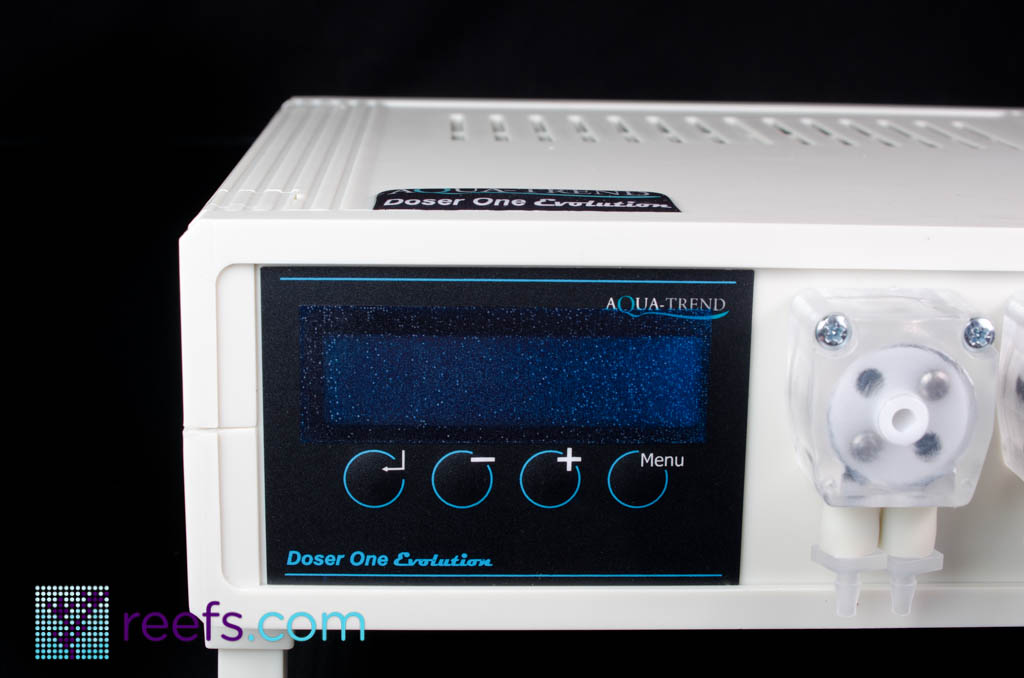
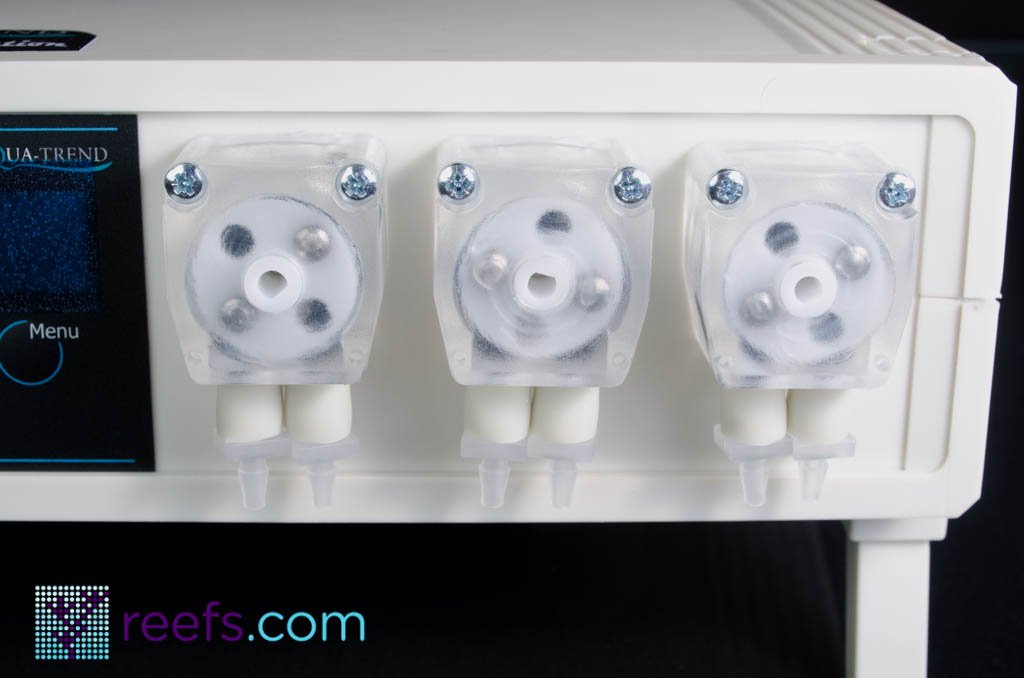
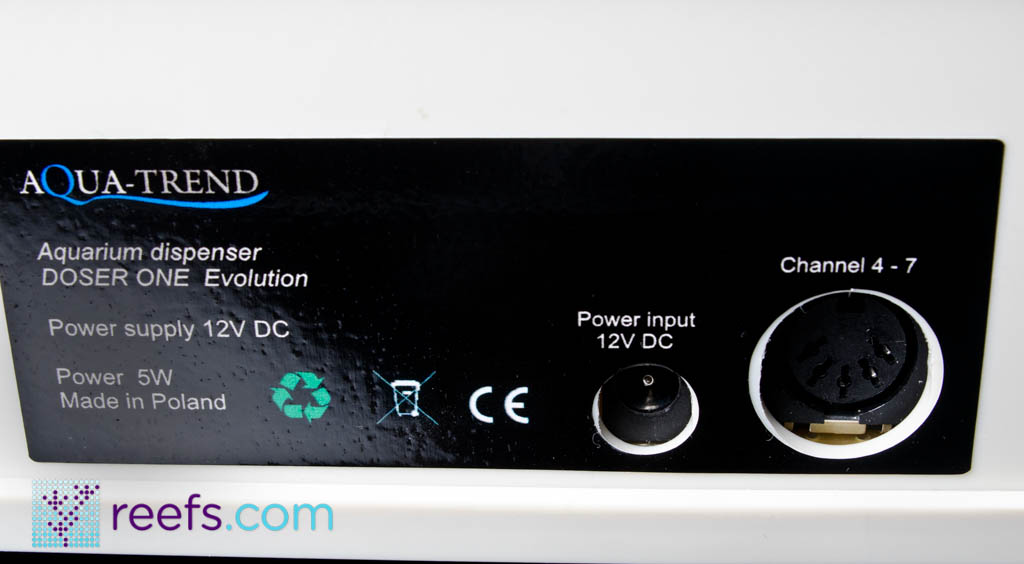
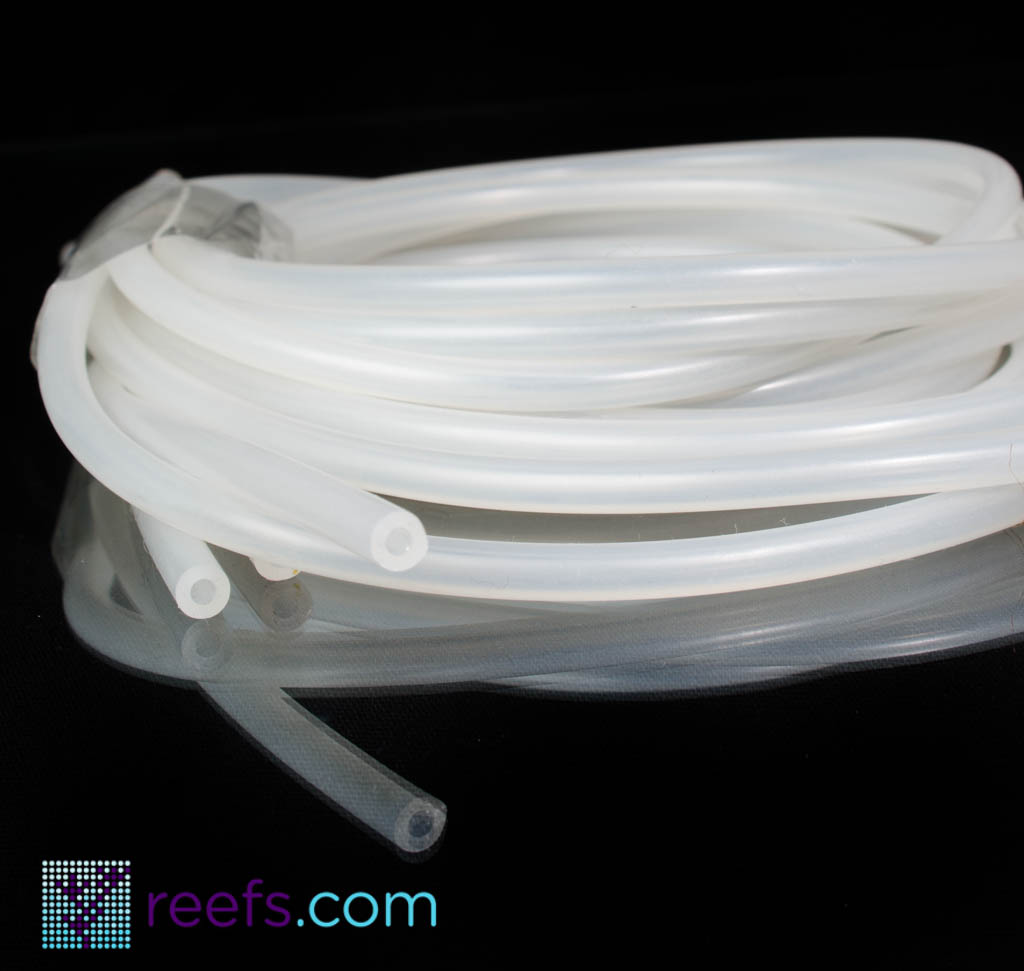

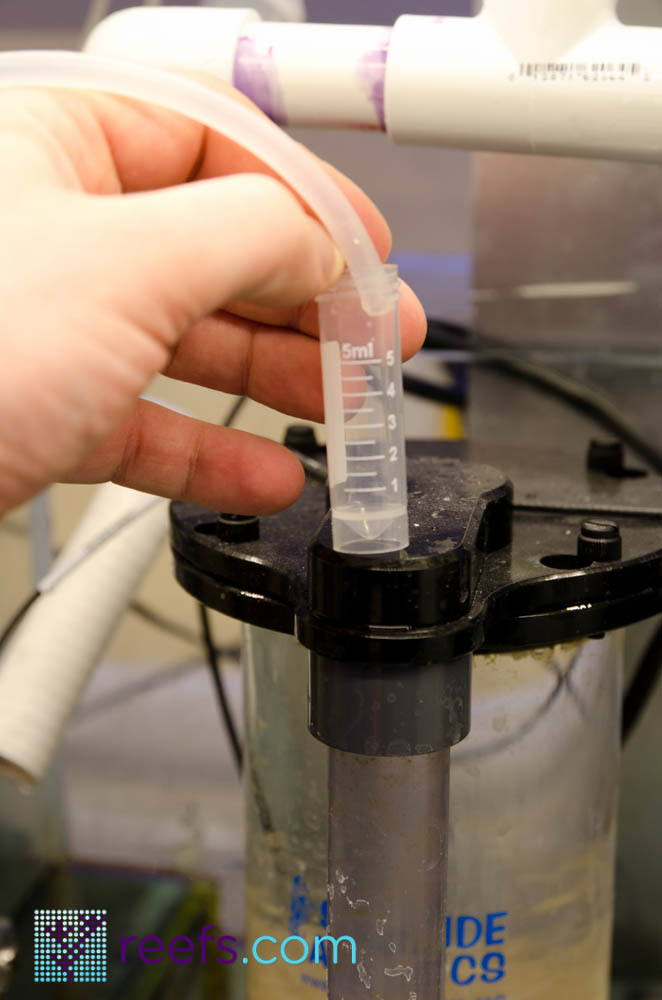
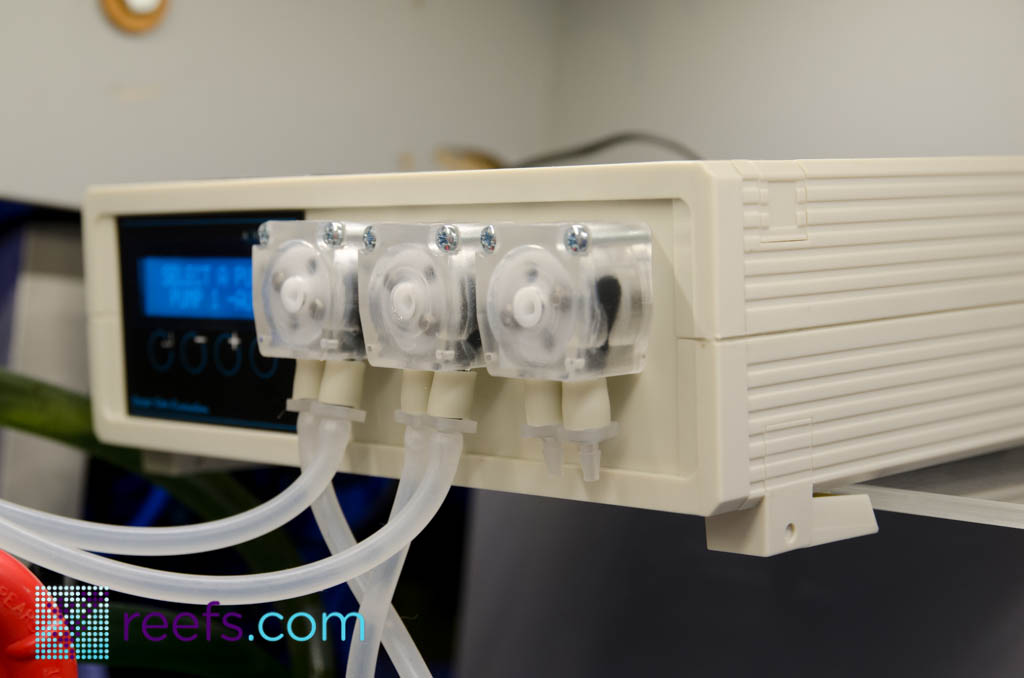









I have a bubble magus sitting on a shelf because I didn’t like the ph spikes produced by it. I was hoping that this pump would vary the pump speed like my old reefdosingpumps.com medical-grade pump does. Even at the lowest dose over the longest interval, it produced unacceptable ph spikes.
Could you please clarify- how did bubble magus produced ph spikes in your tank? It dosed too much in one dose? With Doser One you can program 24 doses a day, so unless you dose a whole lot you can divide your total dose into a 24 hour schedule.